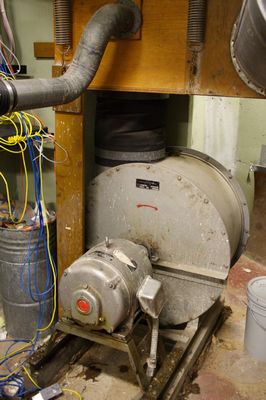 |
The
blower for the
organ sits a level below it in the auditorium's basement. The wood box
above the blower is a regulator chest with the main air supply to the
pipes in the upper right hand corner. |
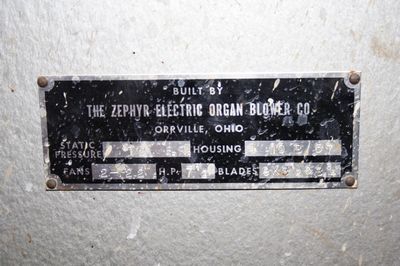 |
This
is a close up of the builder's plate. The housing field has "10 8 57"
stamped on it which likely is the build date, thus indicating that this
is the original blower for the instrument.
The original specs
from Schantz indicate that there will be "two 5 HP blowers", however
this obviously never materialized as there is only one 7 1/2 HP blower. |
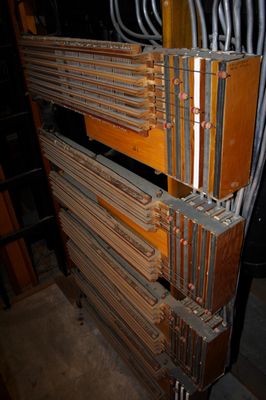 |
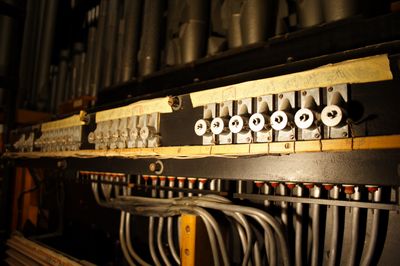 |
As noted
on the pages covering the console, this is an electro-pneumatic
instrument, meaning the controls are actuated with a combination of
electricity and air. The photos above show some of the wiring boards
for the ranks. On the left, each horizontal board represents one of the
ranks, with each wire corresponding to a key on the console. The gray
tubes are air lines which open and close the small vertical bellows on
the right side. The white leathers are replacements for the original
black leathers. The photo on the right shows magnets which again
correspond to a rank on the organ.
|
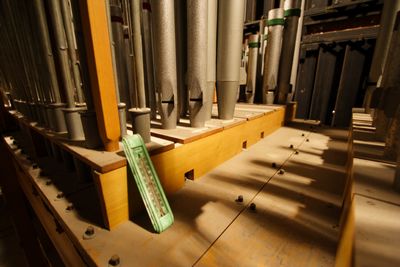 |
Maintaining
a constant temperature helps keep the organ in tune. When
the organ gets tuned, the tuner will note the temperature as this will
affect how the organ gets tuned. This thermometer sits in the Choir
Division. |
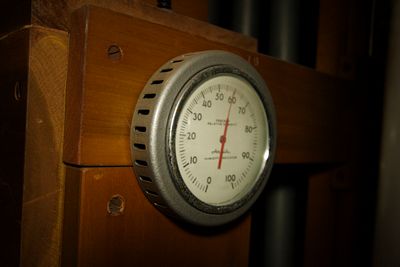
|
Another
enemy of a pipe organ is
humidity. Too much humidity and pipes could potentially rust. Too
little and wood pipes and frames will become brittle and crack. This
hygrometer is located in the Swell chamber.
|
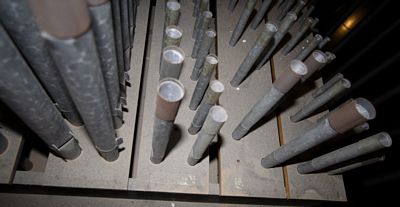 |
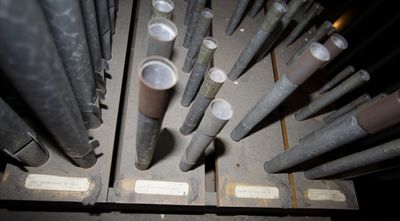 |
If
you've
looked closely at the pictures in the organ, you've probably noticed a
gray coating of dust on just about every flat surface. While it does
little to the pipes themselves, it can cause havoc with the magnets and
the openings in the bottom of the pipe where air enters. Ciphers, or
pipes which won't stop playing, are usually caused by dust. The two
photos above illustrate just how dusty this organ is in spots. The
photo on the left is before the dust was moved from the labels, the
photo on the right is after. These are pipes in the Great closest to
the grill and the auditorium itself. Their proximity to the auditorium
makes them the most vulnerable to the elements which include dust
particles. The amount of dust shown is downright amazing.
|







